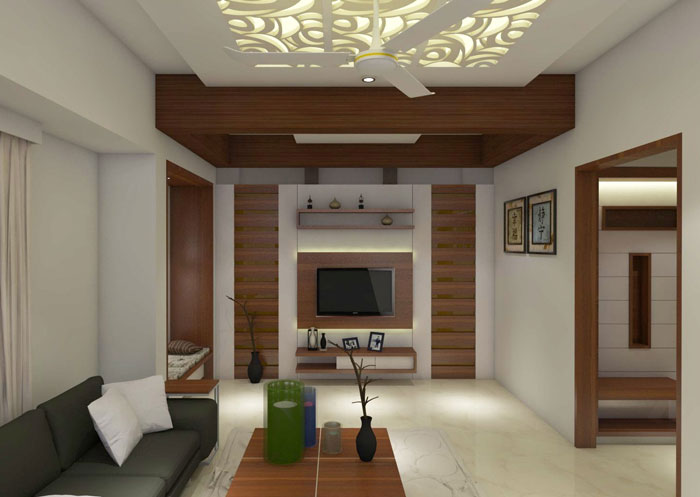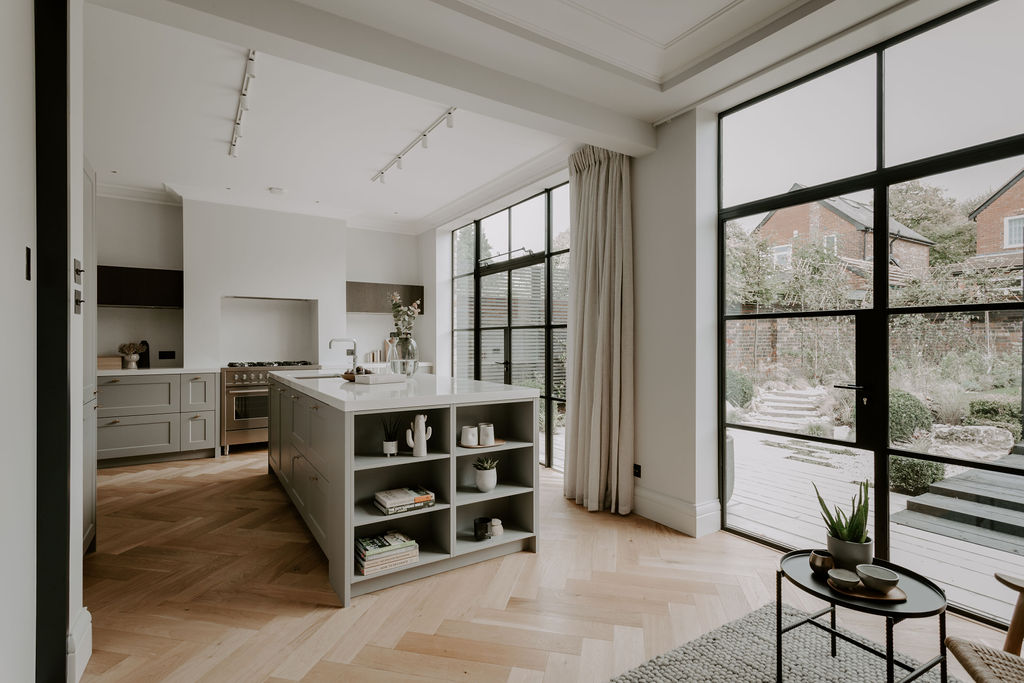Expert Countryside Homes Interior Design for a Peaceful Escape
Expert Countryside Homes Interior Design for a Peaceful Escape
Blog Article
Making Best Use Of Visual Appeal: The Harmony Between Interior Design and Home Designer Techniques
Recognizing the subtle interplay in between interior decoration and home design can significantly boost the aesthetic allure of a living area. This marriage of style disciplines includes a thoughtful integration of building elements with indoor layouts, and a skillful application of concepts such as rhythm, balance, and comparison. As we explore this harmony, we will discover means to create aesthetically striking and functional environments that not just mirror personal style, yet also adapt to the vibrant needs of contemporary living.
Recognizing the Basics: Specifying Interior Design and Home Architecture
Interior layout and home style, typically linked, represent the structural and aesthetic aspects of our living rooms. Interior Design is a diverse technique that involves creating practical, secure, and cosmetically pleasing spaces inside a building. It includes aspects such as furnishings setup, shade control, and accessory option. On the other hand, home architecture mainly concentrates on the solid framework of a structure. It entails creating a functional and visually pleasing framework that stands the examination of time. It incorporates aspects such as space planning, building, and sustainability. Both areas require a deep understanding of human behavior, culture, and psychology. Each plays an important function in shaping our living environments, adding to our overall convenience, performance, and wellbeing.
The Harmony Described: Exactly How Interior Decoration and Home Design Intersect
Understanding the harmony between interior decoration and home architecture can open a globe of creativity and capability. When reviewing this intersection, the impact of architecture on insides is an important facet to think about. This conversation will certainly concentrate on the unifying layout principles that mix these two areas into an unified whole
Unifying Design Concepts
While it might appear that indoor layout and home architecture are two distinct self-controls, they are in fact deeply interconnected, creating a harmony that is crucial for creating harmonious living spaces. Unifying design principles are the columns that promote this synergy. In significance, these principles offer as the bridge, joining indoor layout and building methods.
Architectural Influence on Interiors
When one considers the building impact on insides,The intertwining of indoor style and design ends up being even more noticeable. Building aspects are intrinsic to an area's functionality and visual appeals, forming the design from the beginning. Columns, beam of lights, arcs or stairs, for example, offer both structural and decorative objectives. They can split rooms, develop centerpieces or imbue an area with a details vibe. Factor to consider of percentage, structure, and light additionally originate from architectural influences. Inevitably, design mold and mildews the canvas upon which interior designers function. Their harmony is therefore obvious: architecture develops the framework, which interior decoration enhances with shade, design, and appearance. This symbiotic partnership ensures an unified equilibrium between function and appeal, maximizing the aesthetic charm of any kind of room.
Trick Concepts in Integrating Interior Design and Home Architecture
Striking a balance between performance and aesthetics is a basic element of harmonizing interior layout and home style. An equally essential principle is the assimilation of lasting style to produce green and energy-efficient homes. Last but not least, understanding and exploring numerous building styles can additionally play an important role in attaining an unified style.

Stabilizing Capability and Aesthetics
Stabilizing capability and aesthetics in interior style and home architecture arises as one of the paramount principles to consider. Visual appeal uplifts the state of mind and affects the perception of room, whereas capability ensures use and convenience. Similarly essential is the efficient setup of the area, with a well-planned design contributing significantly to the harmony in between performance and aesthetic appeals.
Sustainable Layout Integration
In keeping the equilibrium between performance and visual appeals, one need to additionally take into consideration the assimilation of sustainable style principles. This technique not just improves the visual charm of an area however also ensures its long life and lowered environmental influence. An unified fusion of indoor layout and home style, guided by sustainability, can produce rooms that are attractive, functional, and environmentally friendly.
Discovering Building Styles
While there are a myriad of building styles to discover, it is necessary to comprehend that every one brings its special concepts that can significantly affect the harmonization of interior decoration and home design. These designs, ranging from the elaborate Baroque to the minimalist Modernist, carry distinct philosophies and aesthetic appeals that, when effectively comprehended and used, can develop homes that are not just visually spectacular however likewise sympathetically incorporated in terms of layout and architecture. Selecting a building design is not just regarding individual aesthetic preference; it is regarding choosing a layout language that speaks with the homeowner's way of life, ideology, and desires, producing a home that is a true representation of its residents.
Situation Studies: Outstanding Instances of Design and Style Synergy
Digging into some outstanding case researches provides an extensive understanding of just how layout and architecture can harmoniously merge to produce practical and engaging areas. The famous Fallingwater house, designed by Frank Lloyd Wright, exquisitely shows this synergy. Wright's design masterfully integrates the home with its bordering landscape, while the indoor mirrors the exterior's natural kinds. Another example is the minimalistic Tadao Ando's Church of Light in Japan. The designer accomplished an excellent equilibrium in between simplicity and drama, utilizing raw concrete and light. Inside, the plain, minimal style develops a feeling of peace and spiritual reflection. These instances highlight the relevance of harmony between interior style and style in attaining functional and aesthetic success.
Practical Tips: Enhancing Your Home's Visual Charm
Attracting motivation from the study of architectural and design synergy, home owners as site link well can carry out some useful strategies to boost their home's visual charm. An unified mix of colors, textures, and illumination can improve an area, developing a cozy and inviting ambience. Going with furnishings that enhances the architectural components of the residence can promote a sense of unity. Wall art and decoration items can add character, mirroring individual style and taste. Incorporating greenery, either with interior plants or sights to the outdoors, can bring an aspect of nature, supplying a calming result. Smart usage of mirrors can open a room, providing an impression of a bigger location. Eventually, the aesthetic charm depends on balancing capability with layout, producing a home that is both habitable and moved here gorgeous.

Future Trends: How Modern Techniques Are Transforming Interior Design and Architecture
As the globe develops, so do the trends in interior design and style. Modern strategies are progressively concentrating on sustainability, incorporating environment-friendly materials and energy-efficient layouts. These fads mirror a shift towards layouts that are not just cosmetically pleasing, yet also environmentally aware, technically advanced, and adaptable to transforming lifestyles.
Conclusion
In verdict, the combination of indoor design and home design techniques is a dynamic strategy to enhancing visual charm. By leveraging key principles like rhythm, equilibrium, and comparison, and incorporating aspects of modern living, designers can produce versatile, aesthetically pleasing atmospheres. Through recognizing this synergy, home owners can make enlightened choices that not just elevate their home yet likewise contribute to their general well-being.
Understanding the refined interaction between interior design and home design can dramatically boost the visual appeal of a living space.Indoor layout and home style, often linked, represent the aesthetic and architectural facets of our living areas.While it may seem that interior style and home find style are two distinctive techniques, they are really deeply interconnected, forming a synergy that is vital for producing harmonious living rooms.The intertwining of interior style and style ends up being also more obvious when one takes into consideration the building impact on interiors. A harmonious fusion of indoor layout and home design, led by sustainability, can produce rooms that are attractive, functional, and ecologically pleasant.
Report this page